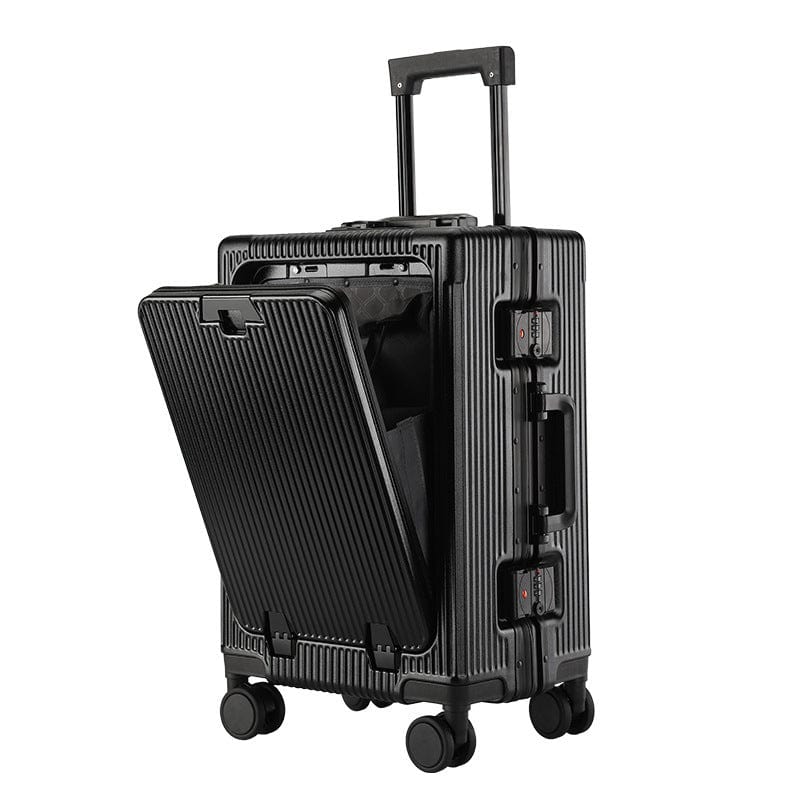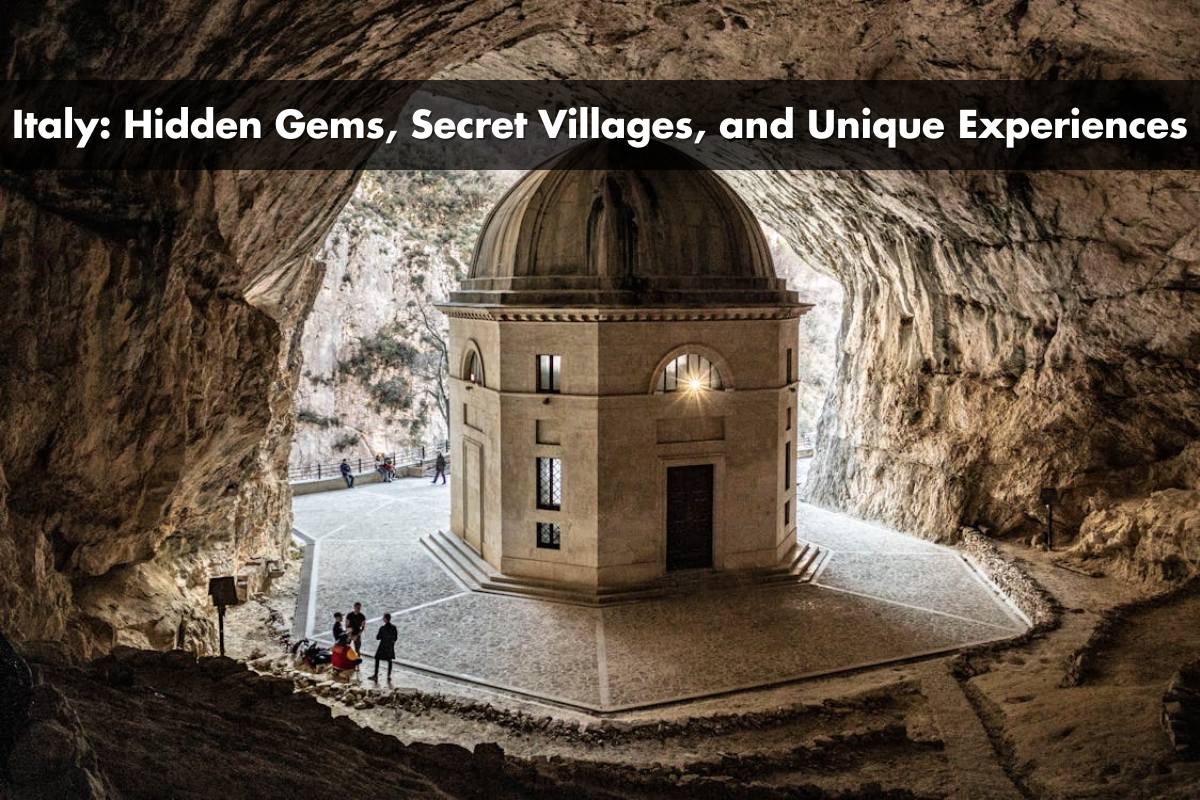Italy's charm goes far beyond its famous cities and iconic landmarks. Sure you’ve heard of Rome’s ancient ruins and Venice’s winding canals but there’s a whole world of unusual wonders waiting just off the beaten path. From mysterious cave systems to quiet seaside villages Italy offers surprises for travelers who crave something different.
Hidden Gems in Italy: Non-Touristy Places to Visit
Explore lesser-known towns, natural reserves and historic corners to experience Italy’s hidden gems beyond popular tourist routes.
- Chiavenna’s Ancient Caves
Encounter glamorized cave systems in Chiavenna, a northern town where ancient grottos have transformed into atmospheric wine cellars and unique dining venues. Stone-lined passageways reveal traditional preservation methods and host events showcasing local cuisine.
- Liguria’s Seaside Villages
Discover quiet coastal gems along Liguria’s shimmering coastline. Towns like Camogli and Tellaro offer multicolored houses, narrow harbors and fresh seafood far from the Cinque Terre crowds.
- Rimini’s Old Town
Stroll through Rimini’s historic center to see Roman bridges, medieval piazzas and ancient arches. Most travelers head to Rimini’s beaches, yet the old quarter’s vibrant pastel facades and landmark Tiberius Bridge highlight centuries of layered history.
- Veneto’s Alpine Vistas
Hike or drive through the lesser-traveled hills and vineyards surrounding Valdobbiadene and Asolo in the Veneto. Local producers craft sparkling Prosecco, and panoramic trails overlook rolling grape fields and snow-capped Dolomites.
- Piedmont’s Mirrorlike Lakes
Visit tranquil lakes like Orta and Mergozzo in Piedmont. These alpine lakes reflect mountain scenery and quaint lakeside villages, offering peaceful alternatives to famed destinations such as Lake Como.
- Trieste’s Culinary Scene
Sample borderland specialties in Trieste, where Austro-Hungarian, Slovenian and Italian influences converge. Food stands and cafes serve hearty pastries, hand-rolled pasta and fresh Adriatic seafood unique to this northeastern city.
- Umbria’s Quiet Hill Towns
Wander stone-paved streets in Umbrian villages such as Spello and Bevagna. With ancient Roman ruins and peaceful olive groves, these towns encapsulate central Italy’s historical depth without the crowds of neighboring Tuscany.
- San Marino’s Mountain Enclave
Explore San Marino, a sovereign microstate perched on Mount Titano. Its medieval towers, panoramic viewpoints and car-free old town present a unique enclave just beyond Emilia-Romagna’s border.
 Each of these destinations offers a distinctive blend of Italy’s history, landscapes and local traditions, creating immersive experiences apart from usual tourist hotspots.
Each of these destinations offers a distinctive blend of Italy’s history, landscapes and local traditions, creating immersive experiences apart from usual tourist hotspots.
Underrated Cities in Italy You Shouldn’t Miss
- Trieste
Trieste stands along the Adriatic Sea near Slovenia and Austria. History and architecture connect here with landmarks like Piazza Unità d’Italia. Cafés serve unique coffee blends and local dishes like jota. Austro-Hungarian influences appear in pastry shops and art nouveau buildings.
- Rimini
Rimini offers far more than sandy beaches. Ancient Arco d’Augusto dates to 27 BC. Old Town streets include Tempio Malatestiano, a Renaissance church. Roman bridges and city walls reveal Rimini’s cultural significance beyond its coastal nightlife.
- Chiavenna
Chiavenna lies in Lombardy’s Alpine foothills and features centuries-old palazzi and cave cellars called crotti. Frescoed churches line the old center. Local cuisine highlights pizzoccheri and bresaola, often enjoyed inside atmospheric caves.
- Gubbio
Gubbio sits in Umbria and retains a medieval character. Steep streets and stone towers lead to the Palazzo dei Consoli. Historic traditions include the Corsa dei Ceri event in May. Ravenna mosaics and surrounding nature reserves add further interest.
- Cagliari
Cagliari, Sardinia’s capital, blends Roman ruins with Mediterranean sea views. Castello District displays ancient city walls and museums. Colorful markets offer pecorino and Bottarga, underscoring local food traditions.
- Aosta
Aosta lies in the northwest Alpine valley and contains remnants from its Roman founding in 25 BC. City gates, triumphal arches, and medieval castles shape the skyline. Local wineries and mountain cuisine reflect bilingual culture shared with French neighbors.
- Vercelli
Vercelli, in Piedmont, centers around Europe’s oldest university and the Basilica di Sant’Andrea. Rice fields around the city produce iconic risotto. Museums showcase archaeological finds from the Roman era.
- Lecce
Lecce, the “Florence of the South,” showcases ornate Baroque palaces and churches. Piazza del Duomo and the Roman amphitheater anchor the old town. Handmade papier-mâché crafts and orecchiette pasta define local artisan traditions.
Each of these cities combines cultural depth, striking architecture, and authentic experiences outside Italy’s major tourist routes.
Trieste
Experience Trieste, a port city on the Adriatic Sea, where Central European and Italian influences form a distinctive urban landscape. Neoclassical facades line the waterfront, with Piazza Unità d’Italia ranking as one of Europe’s largest sea-facing squares and offering views of the marina’s stylish yachts.
Explore Trieste’s layered heritage in neighborhoods that showcase Austro-Hungarian, Slovenian, and Greek elements. Hear a blend of dialects in local cafes and markets, reflecting the city's multicultural history. Visit Miramare Castle, perched on a rock above the sea, to see ornate rooms and panoramic coastal views.
Discover foodie highlights in Trieste’s historic coffeehouses, such as Caffè San Marco, and try local specialties like jota, a hearty bean and sauerkraut stew unique to the region. Savor fresh seafood at city lidos or taste local wines from surrounding Carso vineyards.

Join the tradition of literary exploration in Trieste by following paths once frequented by international writers, including James Joyce. Walk shaded boulevards and hike the strada Napoleonica for vistas over the Gulf of Trieste.
Find sandy beaches stretching north of the city and urban swimming spots like Barcola, where locals gather in warm weather. Combine city exploration with visits to the Grotta Gigante cave system, located just 10 km from the center, offering guided tours through one of the world’s largest show caves.
Trieste Table
|
Attraction |
Context |
Distinctive Feature
|
|---|---|---|
|
Piazza Unità d’Italia |
Waterfront urban square |
Panoramic marina setting |
|
Miramare Castle |
Historic clifftop castle |
Ornate interiors, sea views |
|
Caffè San Marco |
Literary coffeehouse |
Coffee culture, local cuisine |
|
Grotta Gigante |
Ancient cave system |
Largest accessible cave hall |
|
Barcola |
Urban seaside promenade |
Popular swimming, local scene |
Trieste connects country-crossing rail lines, historic sites, diverse food and wine traditions, and natural wonders. This combination marks Trieste as one of Italy's most unusual cities, distinct from tourist-packed destinations.
Secret Coastal and Island Getaways in Italy
Discovering secret coastal and island getaways in Italy unlocks serene experiences away from crowded hotspots. Liguria’s fishing villages, like Camogli and Tellaro, feature pastel facades and harbors packed with traditional boats. Here, you’ll find peaceful pebble beaches and seafood markets run by local families.
Exploring the Pontine Islands, such as Ponza and Ventotene, reveals volcanic landscapes and coves with turquoise waters. Fewer than 3000 residents live on Ponza, where you can swim in grottos and sample catch-of-the-day specialties at waterfront trattorias.
Venturing south, Calabria hosts Scilla, a village that sits on the Tyrrhenian coast near mythic rock formations. Fishermen maintain centuries-old swordfish traditions, and the quiet promenade offers castle views overlooking clear blue sea.

Traveling west, Sardinia’s Cala Gonone provides sea caves, pink sand beaches, and hiking trails with hardly any crowds off-season. Small ferries depart for secluded coves like Cala Luna, home to rugged cliffs and crystal-clear water.
Crossing to Sicily’s Aeolian Islands, you’ll encounter Salina. Around 2600 inhabitants tend caper fields and vineyards, producing celebrated Malvasia wine. Quiet villages like Lingua line the coast, providing volcanic black-sand beaches and scenic sunset views.
These secret coastal and island destinations offer intimate escapes, authentic regional cuisine, and unique natural beauty—connecting you with Italy’s rich landscapes and age-old maritime culture.
Italy’s Best Culinary & Wine Destinations for Food Lovers
Sample regional food specialties in Italy’s culinary hotspots for unique flavors and traditions. Emilia-Romagna delivers Parmigiano Reggiano, traditional balsamic vinegar, and handmade tortellini in cities like Bologna and Modena. Piedmont brings truffle-rich dishes, creamy risotto, and world-class Barolo and Barbaresco wines, especially in the Langhe and Monferrato hills. Sicily infuses lemon, pistachio, capers, and seafood into specialities such as arancini and cannoli, with Marsala wines from the island’s west.
Experience wine cellars and vineyards integrated into unique landscapes. The Prosecco hills of Veneto, a UNESCO World Heritage Site, produce sparkling wines among scenic slopes near Treviso. Campania’s volcanic soils yield robust Taurasi reds and mineral-rich Falanghina whites, with many wineries near the ruins of Pompeii and Mount Vesuvius. Chiavenna uses ancient caves for aging cheeses and salumi, offering tours and rustic tastings.

Join guided food tours for local immersion in culinary traditions along Italy’s coast and countryside. Ligurian villages like Camogli and Tellaro specialize in fresh anchovies, trofie pasta with pesto, and focaccia, served along quiet harbors. Umbria’s hill towns present foraged truffles, pecorino, and Sagrantino wines, frequently featured at seasonal festivals. The Amalfi Coast highlights lemons, delicate seafood, and the local liqueur limoncello.
Explore food markets and local producers for authentic tastes. Turin’s covered markets showcase Alpine cheeses, hazelnuts, and espresso culture. Trieste’s osterias pair Jota stew with crisp white wines, reflecting a blend of Italian and Central European flavors. Cagliari’s San Benedetto market in Sardinia offers fresh seafood, bottarga, and sheep’s milk cheeses for a distinctive southern experience.
Participate in annual festivals and events celebrating regional food and wine. The Alba White Truffle Fair in Piedmont, Eurochocolate in Perugia, and Venice Carnival highlight traditional treats, unique desserts, and local produce, adding cultural context to every tasting. Every region lets you savor Italy’s rich culinary heritage through flavors deeply rooted in place and history.
Essential Travel Gear for Your Italy Adventure
Pack travel gear for Italy that matches both urban excursions and off-the-beaten-path journeys. Reliable items make every itinerary—from ancient caves in Chiavenna to Prosecco hills in Veneto—easier and safer.
- Lightweight, Versatile Clothing
Pack clothing that suits Italy’s climate contrasts. Breathable layers work for Alpine foothills, Piedmont’s lakes, or sun-drenched seaside villages. Include a rain jacket for Veneto and coastal trips.
- Compact Daypack
Carry a daypack for essentials during explorations of Roman bridges in Rimini, wandering Trieste’s city center, or discovering Lecce’s Baroque squares.
- Adapter and Portable Charger
Use a European adapter for reliable power in local hotels and mountain town inns. A portable charger keeps your phone ready for navigation and photos from Liguria’s fishing villages to Umbrian hill towns.
- Reusable Water Bottle
Carry a reusable water bottle to stay hydrated when tasting wines in Piedmont, climbing Aosta’s Roman ruins, or journeying along Calabria’s Tyrrhenian coast.
- Travel-Sized Toiletries and Personal Care Items
Pack compact toiletries for convenience, especially in remote island accommodations or mountain lodges. Include insect repellent for rural adventures.

- Travel Documents Organizer
Bring an organizer for passports, reservation details, and transport tickets, useful when visiting multiple regions such as Sardinia, Sicily, and the Pontine Islands.

Each travel item supports seamless movement between acclaimed UNESCO sites, small-town markets, and rural culinary festivals, reflecting Italy’s shifting landscapes and climates.
Italy Travel Tips: What to Know and What to Pack
Exploring Italy's unusual sights means you'll need to be ready for anything. Pack light layers for changing weather and sturdy shoes for walking those ancient streets or hiking to hidden viewpoints. A compact daypack comes in handy for daily essentials and spontaneous adventures.
Don't forget a European adapter and a portable charger to keep your devices powered up for photos and navigation. Bring a reusable water bottle to stay hydrated and travel-sized toiletries for convenience. Sunglasses and sunscreen are must-haves for sunny days outdoors.
With a bit of planning and the right gear you'll be set to discover Italy's secret corners and create memories well beyond the typical tourist trail.















